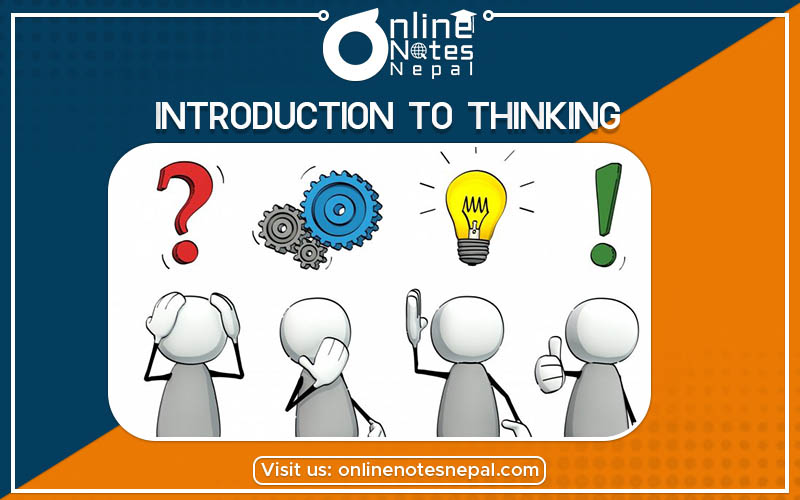Published by: Zaya
Published date: 15 Jun 2021

Thinking is the bridge between the environment and long-term memory. Thinking is a cognitive rearrangement of both information from the environment and the symbols stored in long-term memory.
Thinking is the set of cognitive processes that mediates between stimuli and responses. Thinking is a complex mental process and difficult to differentiate from learning, remembering, and imagination.
Woodworth said,” Thinking is a process of mental exploration”.
It is a very complicated type of thinking which is especially applied during the time of invention, creation, and exploration. Creative people can look at the same thing as everyone else but see something different. Creative people can work well in situations where ambiguity, complexity, and lack of symmetry are present.
Creative thinking is divided into two types:
It is very logical and justifiable thinking. While involving in convergent thinking individual collects different ideas, formulas, information, and knowledge and then applies the sole thinking process in solving the problem. Until a solution is found, it is concerned with a particular end result. The result of convergent thinking is usually a solution that has been previously arrived at by someone else. Eg:-when you are asked the capital of Nepal, you will use convergent thinking skills to provide the answer. Psychologists have found that a high IQ alone doesn’t guarantee creativity.
We come across a number of problems every day. Some of this problem is minor whereas others are majors ones. Problem-solving is to get rid of the current (difficult) situation. The problem is the matter or situation regarded as unwelcome or harmful. A problem may be defined as any conflict or difference in our goal. Or, The Term problem can be defined as a “Gap between the Expectation and Reality”. Whenever such a gap exists activities and resources must be brought back on track which is known as problem-solving.
1. Identifying the problem: The first step is to find out the nature and context of the problem and how important it is for the person to solve it.
2. The hypothesis of the problem: The probable outcome is not yet been tested. This step includes possible findings to solve the problem.
3. Preparation/Alternatives: After the hypothesis, one has to prepare the possible resources to solve the problem. Alternatives- Only a single way may not meet the goal thus, there should be alternatives.
4. Selection of Right Alternatives: Once various alternatives are generated, the right one must be chosen and evaluated. If the evaluation results in the wrong choice, the person returns back to the first step. But if it is the right choice, then it is assumed that the problem is solved.
5. Analysis of information/data (Result)
6. Testing Hypothesis: After the data has been collected, proceed, and analyzed we have to conclude our findings. Then the result is tested to the hypothesis if the result is the same then it is considered as an elaborated hypothesis.
7. Generalization: The findings are considered to be true for other similar situations. (In some cases it may not be 100% true). E.g- There is a 90% chance for relapse.
8. Implementation of results in other similar situations.
1. Algorithm
2. Heuristic/Analogy
3. Trial and error
4. Insight